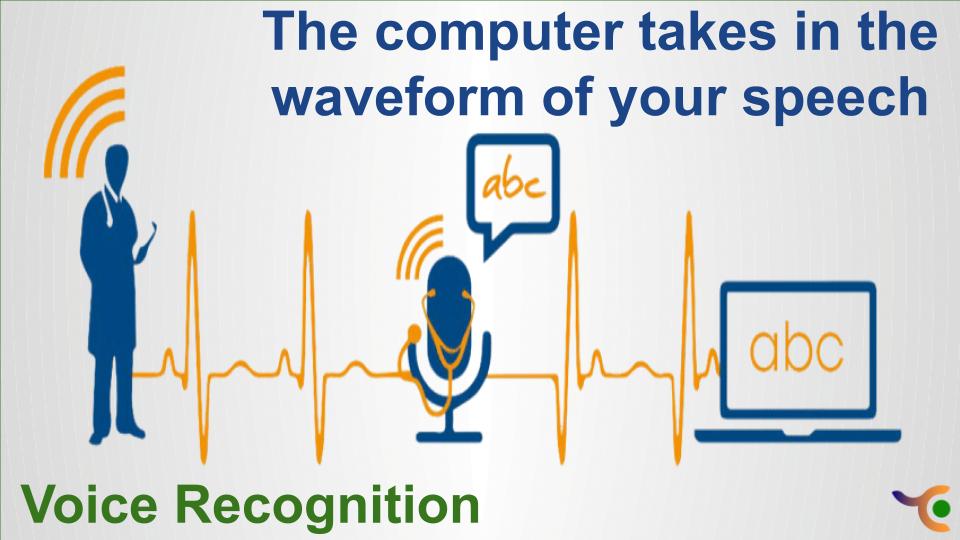Voice recognition is the ability of a machine or program to receive and translate commands or to understand and carry them out. Voice recognition has gained prominence and usage with the rise of AI and intelligent assistants.
The voice recognition system enables consumers to interact with the technology simply by speaking, enabling hands-free requests, reminders, and other simple functions.
History
Voice recognition technology has grown exponentially over the past five decades. Before 1976, computers could only understand little over 1,000 words. This total grew to nearly 20,000 in the 1980s and continued to develop voice recognition technology.
Following the launch of smartphones in the second half of the 2000s, Google launched a voice search app for iPhone. Three years later, Apple introduced Siri, a major voice-recognition assistant.
During this past decade, several other technology leaders have also developed more sophisticated voice recognition software, including Alexa in Amazon’s Echo and Microsoft’s Cortana – both of which act as personal assistants that respond to voice commands.
How does it work?
Voice recognition software on a computer requires that the analog audio be converted to a digital signal, a process known as analog-to-digital conversion. For a computer to understand a sign, it must have a digital database, or vocabulary, of words or syllables as well as a quick means of comparing the signs to this data. Speech patterns are stored on the hard drive and loaded into memory when the program is running.
In practice, the adequate vocabulary size of a voice recognition program is directly related to the random access memory. Compared to searching the hard drive for some matches. A voice recognition program runs many times faster if the entire vocabulary can be loaded into RAM. Processing speed is important, as well, because it affects how fast the computer can search RAM for matches.
While voice recognition technology originated on the PC. So, it has gained acceptance in both the business and consumer space on mobile devices and in-home accessory products. The popularity of smartphones opened up the opportunity to add voice recognition technology to consumers’ pockets. While home devices such as the Google Home and Amazon Echo brought voice recognition technology into living rooms and kitchens. Voice recognition combined with the growing stabilization of Internet of Things sensors. It has added a technological layer to many consumer products that previously lacked any smart capabilities.
As the use of voice recognition technology grows and more users interact with it, companies are implementing this software. It will have more data and information to feed into the neural networks that power voice recognition systems. Thus improving the capabilities and accuracy of voice recognition products.
Uses
The use of voice recognition has grown exponentially as AI, machine learning, and consumer acceptance mature. In-home digital assistants from Google to Amazon to Apple have implemented VR software to interact with users. The way consumers use voice recognition technology varies depending on the product but may include transcribing voice into text, setting reminders, searching the Internet, and responding to simple questions and requests.
The government is also exploring ways to use this technology for security purposes. The National Security Agency has used voice recognition systems since 2004.
Different Software’s
- Apple Siri
- Amazon Alexa
- Microsoft’s Cortana
- Google Assistant
Apple Siri
This personal assistant is only used by Apple users. Firstly it appeared in the iPhone 4S and has become a necessary part of new Apple products. Siri can post to Twitter or Facebook, solve complex math problems, save notes, make reservations, and more.
Amazon Alexa
Amazon’s smart speakers are shipping with Alexa. It was first introduced in 2013. Unlike Siri, it can be consolidated into third-party devices. It has the capacity of managing voice interaction, online shopping, and music playback. Alexa controls multiple smart devices.
Microsoft’s Cortana
Cortana is a virtual assistant released by Microsoft in 2014. It is available for Android and IOS users and used by Windows OS users. You can manage your calendar, join meetings in Microsoft Teams, set reminders, and open apps on your computer with the help of Cortana.
Google Assistant
Google creates virtual assistants with Google Now. It was a feature of Google Search, which allowed users to search for information using voice. In 2016, Google announced Google Assistant and stopped the development of this project. It was originally integrated into the Google Home smart speaker and the Google Pixel smartphone.
Advantages And Disadvantages
Speech recognition is a relatively new science. It has gone from simple programs with the ability to recognize dozens of words in a single language to complex systems based on AI. Over the course of several decades, it has evolved significantly and has begun to solve a wider range of tasks. Despite this, there is still a lot to be done to improve it.
Advantages
- Increase the productivity of businesses.
- Automates interactions between businesses and customers.
- Adds an extra security level.
- Records speech faster than a human can type.
- Helps people with disabilities.
- Helps control your home appliances.
- Assists drivers with the ASR system in the car and more.
Disadvantages
- The system cannot fully recognize speech if the speaker does not speak quickly and clearly.
- A larger vocabulary is needed to improve recognition accuracy.
- Each language requires separate training for ASR.
- Businesses can collect and use a user’s voice data without their permission.
- Time and financial costs are high.
- ASR software ingests a lot of memory and requires a large amount of RAM.
About Us
TriColor Initiative(TCI) has speech recognition developmental tools and provides services that enable organizations to automate their complex business processes while gaining essential business insights.


